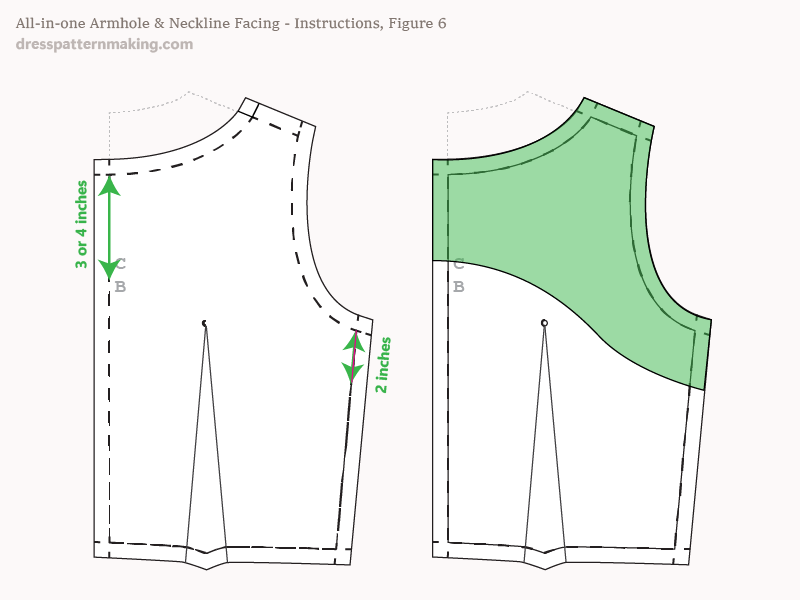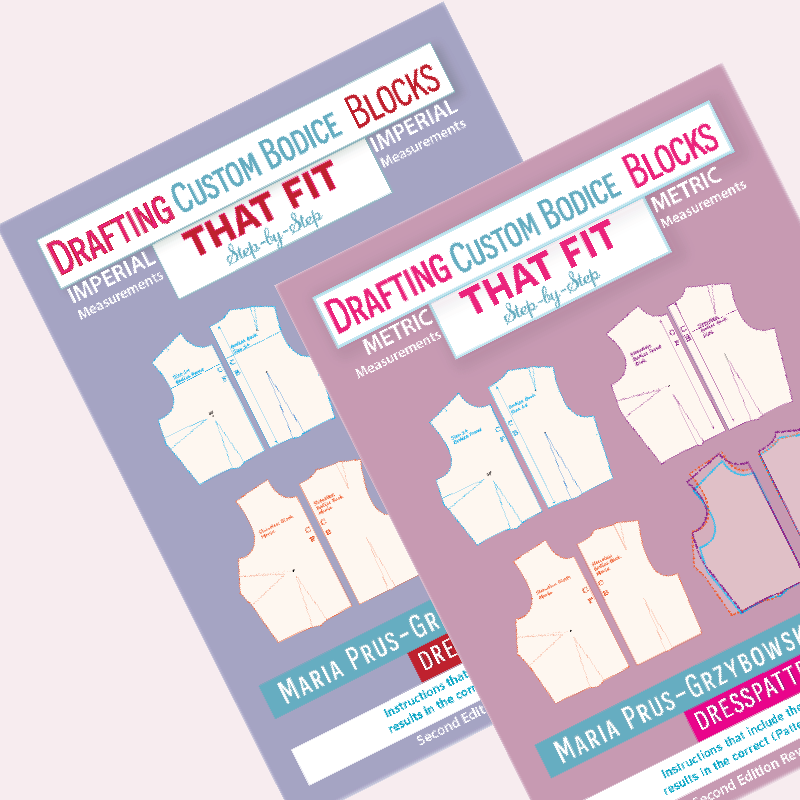All-in-One Armhole & Neckline Facing
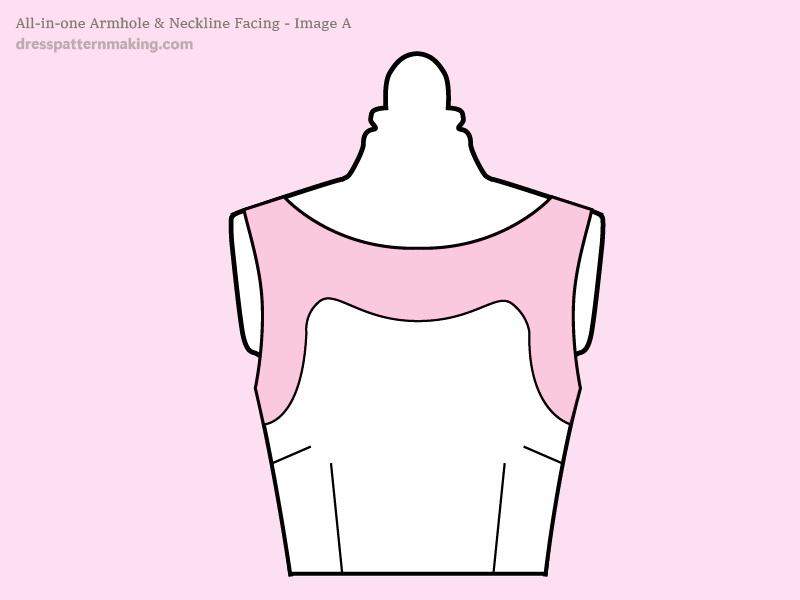
All-in-one facings combine the neckline and armhole facings; these are necessary when the shoulder length is too narrow to have them separate. The width of facing at the shoulder and the underarm is usually between 1.5 and 2-inches. The neckline depth for the front is usually around 2-inches, and for the back 4-inches. The example below walks you through creating the facing for the bodice front. The same process applies to the bodice back. Make sure you check your front and back facings against each other.
Instructions (All-in-One Facing) - Figure 1
I have drawn the neckline on the block, and traced the block with that neckline. I am using the Sleeveless Block, but if you weren't you may need to take some off the side seam (depending on how much ease you want). Note that I have created my Bodice Front pattern piece, and I am going to draw the facing on that pattern piece. I will later trace the facing from there.

Instructions (All-in-One Facing) - Figure 2
The width of the facing for the Bodice Front is 2-inches at the shoulder, the armhole and the CF; at the seam lines, not the cutting lines. On the left the facing measurements are shown in yellow shading. The facing does have to extend through the seam allowance; on the right the yellow shading with the black outline shows the shapes of the two Front Facing pattern pieces. On your paper you will of course just have lines, not shading.

Instructions (All-in-One Facing) - Figure 3
The facing lines are drawn on your original pattern piece, and you don't want to cut that up. (Some of) your choices are:
- Put tracing paper on top, trace the facing (don't forget to mark the grain-line while you're there!), then cut them out.
- Start with doubled up paper when you create the pattern. (You could just put another piece of paper underneath when finished, but it is less secure, could move, and end up being just a little wrong). You can then cut out and notch both pieces together. The top one, with the facings marked, can be cut up for the facing pattern pieces.
- Put some paper underneath and use a tracing wheel to draw the facing pieces. You will end up with fine holes in the bottom paper; draw over those lines with pencil to outline the shape.
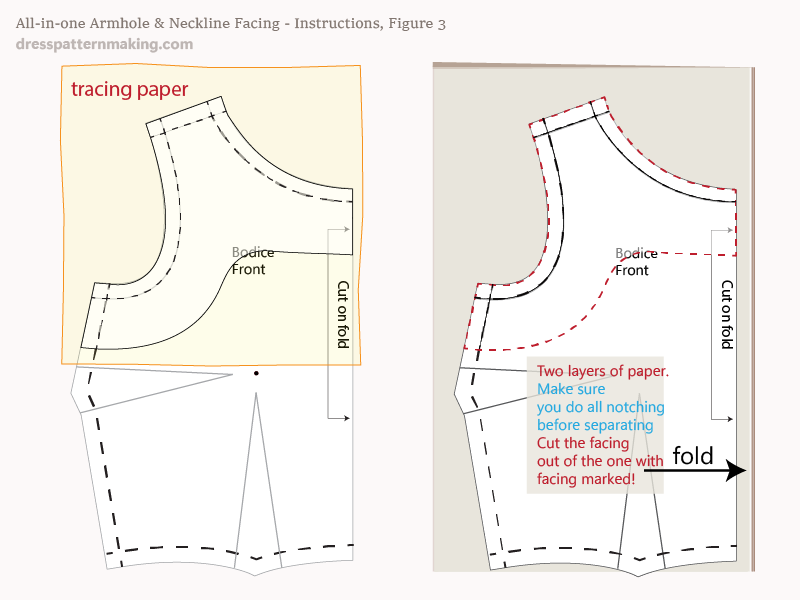
Instructions (All-in-One Facing) - Figure 4
Some textbooks suggest you trim a slight amount of the facing, as shown on the image below, to make the facing slightly smaller and improve the fit. I have checked commercial patterns and they don't seem to do this. It also wasn't covered in my TAFE course. The tiny bit that is trimmed is 1/16 at the shoulder down to zero at the shoulder tip and neck point, and 1/8 at the the side down to zero at the underarm. The amount that is shaved off is shown in red shading.
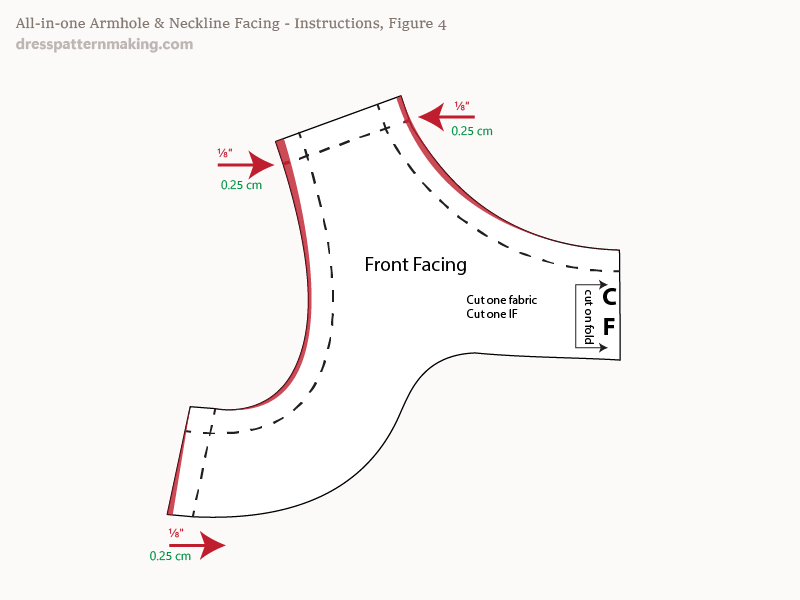
Instructions (All-in-One Facing) - Figure 5
I will be using the Sleeveless Bodice Back block. As there is a shoulder dart in the bodice back and the dart is not needed, I will redraw the shoulder line and armhole. I will draw this the new shoulder line and armhole on the block and trace/transfer that shape to the paper.
- On the block, draw a straight line from the neck point to the shoulder tip.
- Along that line, from the neck point, measure the shoulder length (without the dart) and mark the neck point. (If you do not want to actually measure, place the Bodice Front on top and mark the length).
- Redraw the armhole.
- Trace/transfer that shape onto paper (you need to work out your own method of transferring lines that are inside the block that you can't trace).
Now we want the back neckline to smooth into the front neckline - one way to do so is to use the front pattern/facing piece.
- Match the pattern or the front pattern or facing piece at the shoulder, and draw in the back neckline that you want.
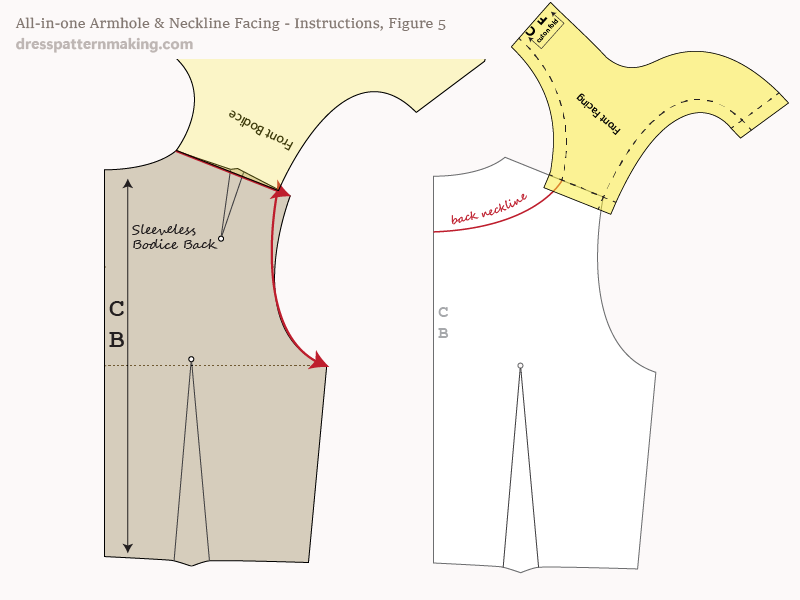
Instructions (All-in-One Facing) - Figure 6
- Add seam allowance to your Bodice Front pattern piece.
- Measure 4-inches down from the CB neck for the facing depth.
- Measure 2-inches down from the armhole for the facing.
- Draw in the lines for the facing pattern piece (shown by the shading in the right image).
- Notch the seam allowance points.
